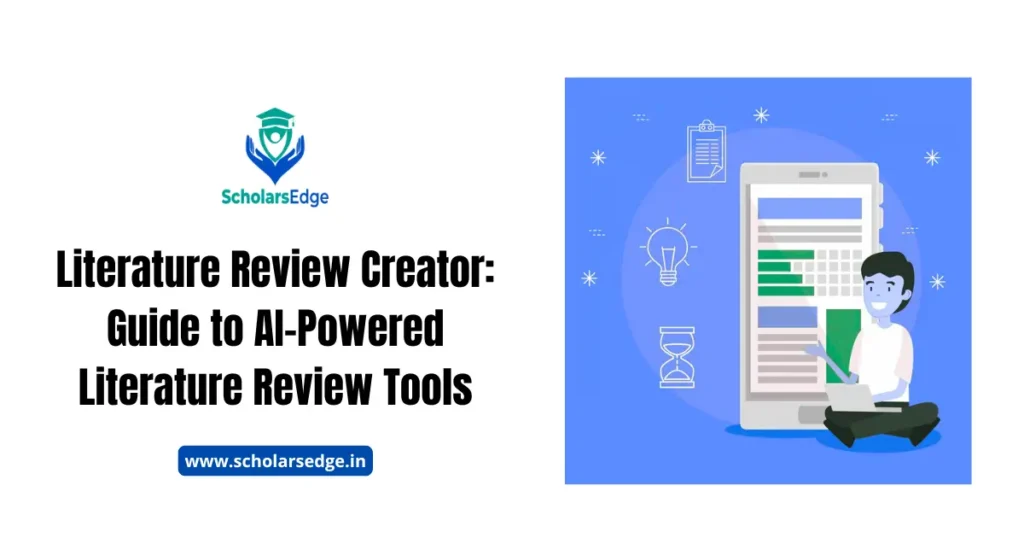
Creating a literature review has long been one of the most demanding aspects of academic research. Scholars often spend months sifting through hundreds of papers, synthesizing complex information, and weaving disparate findings into a coherent narrative. However, the landscape of academic research is undergoing a profound transformation with the emergence of artificial intelligence tools specifically designed to streamline the literature review process. This guide explores how AI revolutionizes literature reviews and provides practical insights for effectively leveraging these powerful tools.
The AI Revolution in Literature Review Creation
Artificial intelligence is fundamentally changing how researchers approach literature reviews through its ability to process and analyze vast amounts of academic content at unprecedented speeds. AI algorithms can now scan thousands of papers in minutes, identifying patterns, extracting key themes, and generating initial syntheses that would typically take researchers weeks to compile manually.
The transformation stems from advanced natural language processing (NLP) capabilities that enable AI to understand academic text with remarkable sophistication. These systems can recognize complex relationships between concepts, track the evolution of ideas across multiple papers, and even identify gaps in existing research. For academics, this means less time on mechanical tasks like initial source gathering and more on critical analysis and interpretation.
Essential AI Tools for Literature Reviews
AI Literature Review Generators
Leading tools like ScribeKick and Research Synth AI offer comprehensive literature review generation capabilities. These platforms can analyze your research question, scan relevant databases, and produce structured initial drafts. Key features typically include:
- Customizable research parameters and frameworks
- Automatic thematic organization
- Integration with major academic databases
- Built-in citation management
- Collaborative editing capabilities
While these tools excel at producing preliminary drafts, they work best when researchers use them as a foundation for further refinement rather than a final product.
Research Paper Analysis Platforms
Platforms like PaperDigest and ScholarAI focus specifically on analyzing and synthesizing academic papers. These tools stand out for their ability to:
- Generate detailed paper summaries
- Extract key methodologies and findings
- Identify relationships between different studies
- Track citation networks and research impact
- Highlight emerging trends in specific fields
The most effective platforms combine multiple analysis approaches, from statistical analysis of methodologies to semantic analysis of conclusions.
Intelligent Summarization Tools
AI-powered summarizers have evolved beyond simple text reduction to become sophisticated research assistants. Modern tools can:
- Generate multi-level summaries (abstract, detailed, and comprehensive)
- Maintain context across multiple documents
- Identify and extract methodology sections
- Highlight conflicting findings across studies
- Generate comparative analyses
These capabilities are particularly valuable when dealing with large volumes of literature or when quick comparative analyses are needed.
Smart Citation Managers
The latest generation of citation management tools goes beyond basic reference tracking to offer:
- Automated citation style formatting
- Cross-reference checking
- Citation network analysis
- Impact factor tracking
- Integration with word processors and research databases
Maximizing AI Tool Effectiveness
Strategic Implementation
- Define Clear Parameters
- Establish specific research questions and objectives
- Identify key themes and concepts
- Set clear inclusion/exclusion criteria
- Determine the desired depth of analysis
- Tool Selection Criteria
- Research scope and complexity
- Required features (e.g., collaboration, integration capabilities)
- Budget constraints
- Learning curve and available training resources
- Output format requirements
Content Curation and Refinement
Effective use of AI tools requires a systematic approach to content management:
- Initial Review
- Assess AI-generated summaries for relevance
- Verify source credibility
- Check for proper context-maintenance
- Identify areas requiring human expertise
- Content Organization
- Structure findings according to themes or chronology
- Integrate multiple AI-generated analyses
- Maintain consistent formatting
- Ensure logical flow between sections
- Quality Assurance
- Cross-reference findings with original sources
- Verify the accuracy of citations and quotations
- Check for consistency in terminology
- Ensure proper attribution of ideas
Understanding Limitations and Challenges
While AI tools offer tremendous benefits, researchers should be aware of their limitations:
Technical Constraints
- Difficulty interpreting complex theoretical frameworks
- Limited ability to understand subtle contextual nuances
- Potential for missing important qualitative insights
- Occasional misinterpretation of specialized terminology
Quality Considerations
- Need for human verification of AI-generated content
- Importance of maintaining academic rigor
- Risk of oversimplification in complex topics
- Potential for bias in source selection
Future Horizons
The future of AI in literature review creation looks promising, with several emerging trends:
- Integration of machine learning with semantic analysis for deeper understanding
- Enhanced natural language generation capabilities
- Improved handling of interdisciplinary research
- Better integration with academic databases and repositories
- Advanced visualization tools for research mapping
Conclusion
AI-powered tools are revolutionizing the literature review process, offering researchers unprecedented efficiency and analytical capabilities. While these tools cannot replace human expertise, they provide valuable support for researchers to focus on higher-level analysis and interpretation. The key to success lies in understanding the capabilities and limitations of these tools and using them strategically within a broader research methodology.
As AI technology evolves, researchers who master these tools will be better equipped to handle the growing complexity and volume of academic literature. The future of literature review creation lies in the effective partnership between human expertise and artificial intelligence, combining the best to advance academic knowledge more efficiently than ever.
FAQs
Is it okay to use AI for a literature review?
Yes, using AI for a literature review can be beneficial, but it’s essential to use it wisely. AI tools can help researchers locate relevant papers, summarize findings, and organize information efficiently. However, AI-generated insights do not replace a researcher’s expertise and critical analysis. Verifying sources and synthesizing findings manually is crucial to maintain accuracy and depth. So, while AI can streamline the process, human judgment remains essential in crafting a comprehensive literature review.
What is an AI literature review generator?
An AI literature review generator is a tool that uses artificial intelligence to assist researchers in summarizing and organizing academic literature. By inputting keywords or topics, these tools search academic databases, retrieve relevant studies, and generate summaries or thematic outlines based on the findings. While helpful for time-saving and structuring content, these generators may need more nuance than human analysis offers. They serve as a starting point for researchers but still require human oversight for accuracy and coherence.
What is a professional literature review generator?
A professional literature review generator is an AI-driven tool specifically designed to assist academics, students, and professionals create structured, well-organized literature reviews. These tools analyze vast amounts of academic content, classify findings, and help draft initial summaries based on specific fields or keywords. Many professional tools are optimized to understand academic standards, ensuring relevance and adherence to citation practices. However, while these generators aid the initial review process, users should refine and interpret the findings to ensure the literature review meets professional standards.
